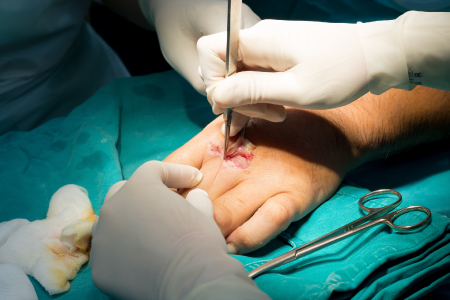Wrists may be small compared to the rest of the body, but there are a numerous procedures that can be performed on this one part—and you need to get your bones, ligaments, and tendons straight if you want to get paid. You certainly don’t want to code for an arthrodesis procedure when an arthroscopy was performed, and even the multiple codes for arthroscopy require a special attention to detail and understanding of anatomy.
That’s why orthopedic coding expert Margie Vaught has developed specific tricks to cut through the complexity of hand surgery coding as well as wrist and finger procedures—so that you can be sure you’re selecting the right codes. She explains these techniques in her live audio conference with ProfEdOnDemand, “Expert Coding & Documentation for Hand/Wrist Surgical Procedures,” breaking down even the most difficult requirements step by step to understand the subtleties of this intricate subset of orthopedic coding.
Know 5 Arthroscopy Codes
Of course, you must begin with sufficient documentation of surgical procedures. (Don’t be afraid to contact a physician for clarification if you need it!) But you must also learn to decode that documentation for reimbursement clues.
For instance, clear documentation will show you not only whether to code for a procedure like arthrodesis (where the joint is immobilized surgically by fusing together adjacent bones) or arthroscopy, but also what kind of arthroscopy was performed.
Zero in: Arthroscopy, a minimally invasive procedure, is used to identify the cause of wrist pain and in some cases perform repairs. The subtle differences in the five main CPT® codes associated with arthroscopies (29844, 29845, 29846 and 29847) may trip you up, but with a few tricks and a solid knowledge of anatomy, you’ll be able to tease out the distinctions with ease.
Clarify Details in Anatomy
The five primary codes for wrist arthroscopy, as outlined in BioPortal, are as follows:
- 29843: wrist, surgical; for infection, lavage and drainage
- 29844: wrist, surgical; synovectomy, partial
- 29845: wrist, surgical; synovectomy, complete
- 29846: wrist, surgical; excision of triangular fibrocartilage and/or joint debridement
- 29847: wrist, surgical; internal fixation for fracture or instability
Clues: As you’ll notice, these codes are very similar, but there are a few key terms that are different to help you decide which is appropriate to report:
- Syonvectomy removes the inflamed joint tissue (synovium) and, in regards to the wrist, can be either partial (29844) or complete (29845).
- Triangular fibrocartilage complex (TFC), a structure in the wrist between the distal ulna and the ulna carpals, can experience tears due to a variety of reasons and requires arthroscopy to investigate and possibly remove the fibrocartilage, as in code 29846.
- Debridement is the removal of damaged tissue or foreign objects—cartilage or bone in the case of wrist arthroscopy.
Equipped with this information, you’ll find surgical procedure coding much easier. Debridement or excision of TFC? 29846 is your choice. If the synovium was removed instead, you would select between 29844 and 29845. Lastly, if pins were used to stabilize the joint, code 29847 would be appropriate, while simple lavage and drainage would mean you’d use code 29843.
Double-Check the Rules
Remember: In each case, do consider bundling/unbundling. You’ll need to check the payer’s rules—they vary not just between Medicare and private payers but also among private payers. For example, certain payers, but not all, may allow you to bundle 29846 and 29847 if both a TFC repair and a fracture reduction were performed on the same day.
It’s easy to get lost in the complexity of wrist anatomy, which is why a keen eye and patience to memorize subtle differences between orthopedic codes will serve you well, says Vaught.




